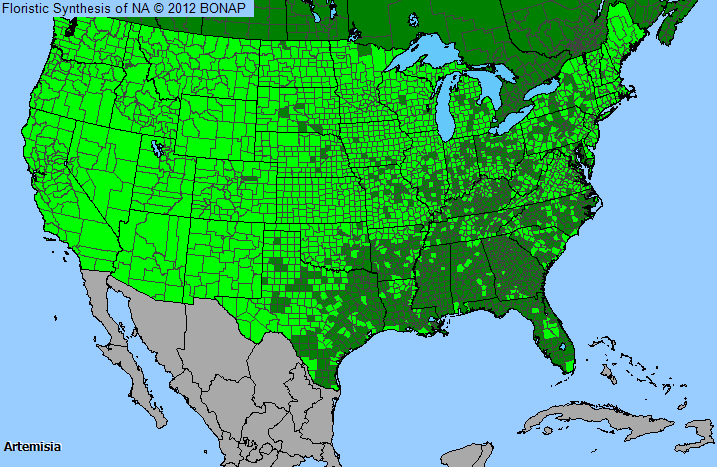
Plant Allergy Overview
Allergenicity
Severe
Pollen Season
Summer Fall
Type
Weed
Sub-Type
Perennial
Allergy Information
All species are wind-pollinated and usually produce large amounts of pollen. These plants may be the most significant cause of pollinosis after ragweeds and the grasses.
Genus Details
Artemisias are usually aromatic and bitter annual or perennial herbs or shrubs. Artemisia species are common in western states with up to 11 species present in the Rocky Mountains. The alternate, lacy, lance-shaped, or oblong leaves vary greatly in size among species. Plant heights vary among species from 1 to 10 feet tall. Flowers are small, yellow or white, with nodding or erect in spikes. Artemisia species flower during midsummer and autumn months, which can vary depending on latitude and elevation. One species, sagebrush, flowers from July to late September with allergenic pollen that can cause pollinosis in western US. Another species, wormwood, is common in central states and flowers in late summer and autumn.
Pollen Description
Pollen grains of Artemisia are prolate spheroidal to subspheroidal and 3-colporate. The colpi are long and the sexine is thickened equatorially and thinner at the poles with short spinules (0.6um long) interspersed with granules.
Genus Distribution

The shaded areas on the map indicates where the genus has been observed in the United States.
 - Native, observed in a county
- Native, observed in a county  - Introduced, observed in a county
- Introduced, observed in a county  - Rarely observed
- Rarely observedSpecies in Sagebrush, Wormwood Genus
Allergens & Plants Search
Enter a full or partial species name to find more information on one of over 1,200 potentially allergenic plants.
For example, you can find chenopods searching on "cheno"


